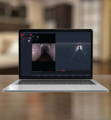No Products in the Cart
- High-sensitivity joysticks
- Double antenna system
- Full HD screen
- ASIO Flight control APP
- Monitor flights by both the pilot, and inspectors.
- Obstacle repulsion
24 Minutes
Flight Time
10K Lumen
Oblique Lighting
True 4K + IR
Camera
FLIR 160x120px @ 9fps
Infrared Camera

Keep control of your entire operations

Observe even the tiniest detail





ASIO lightweight design (below 100g), is built with advanced materials to ensure optimal resistance when it comes into contact with the environment. These materials include a combination of advanced polymer composite used in the automotive industry and defence-grade strings, enabling a long-life for your investment. And even in the event of an incident, the cage replacement is quick and easy so you can get back to your operation in a matter of minutes.
Flybotix’s patented propulsion system is built around two large coaxial and reclining propellers allowing extended flight time (up to 24 minutes), reduced noise level (only at 80dB at 1m) and redundancy. ASIO’s coaxial rotor technology ensures a redundancy in the control and propulsion systems, safely landing the drone in case of an incident.
ASIO integrates more than a dozen sensors to measure attitude and position 8000 times per second, making it perfectly stable in the most challenging environments, without the need of GPS.
Pilots can also adjust the horizontal speed with a single joystick thanks to the wall-lock algorithm, which maintains a constant distance to the wall and the altitude of the drone.
Additionally, the indoor drone can follow its path backwards, and smoothly land via its rewind algorithm and auto-landing button respectively. Its obstacle repulsion simulates an invisible sphere surrounding ASIO and continuously analyzes the environment to automatically avoid collisions. The Safety slowdown feature ensures ASIO can stop before touching an obstacle, even during max speed.
Featuring a 4K resolution (3840×2160 pixels) camera, the indoor drone allows you to spot the tiniest details in true colours and to capture 12 megapixels pictures directly during the flight.
You can also spot defects that would otherwise be undetectable thanks to its infrared sensor thermal camera.
The 10,000 lumen luminous power, can make the darkest places as clear as daylight, and the live-streaming feature provides you with full control of your operation. You can also store all data on board, in full definition, and on an ultra-fast micro SD card.
1 x ASIO Drone Unit
3 x ASIO Battery packs and safety transport bags
1 x Safety vest

1 x 2.4 GHz Remote Controller
ASIO Range extender (optional)
Spare cage (optional)
Battery charger
12 months warranty and standard support
1 x Transport box
Aircraft
Remote controller
Battery pack
RGB Camera
IR Camera
Gimbal system
Lighting system
Transport case